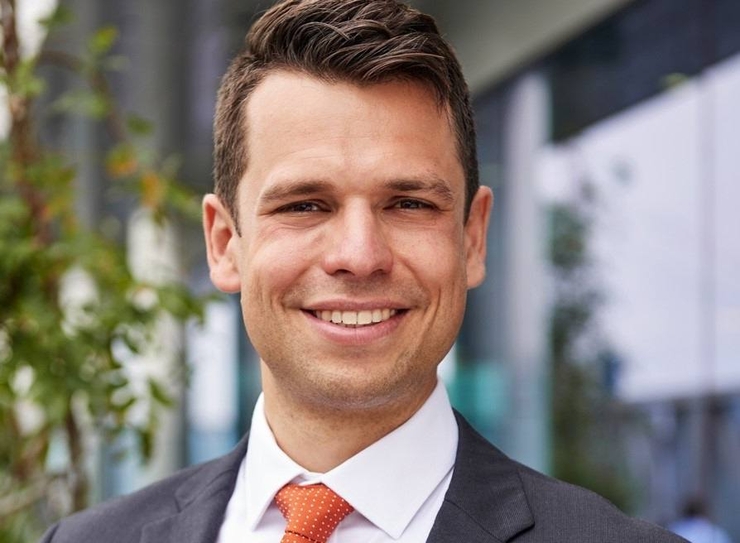What are some key changes to society since the COVID-19 pandemic, and how will they impact on private health?
It's a loaded question, and one that demographer Simon Kuestenmacher will address at the APHA 39th National Congress.
Despite the doom and gloom of the past two years, Simon said he was actually "extremely optimistic" about Australia's future.
"I think we should congratulate ourselves on handling the pandemic so well," he said.
"In the United States, you were 45 times more likely to die from COVID than you were in Australia and really, that's a big, fat success.
"The health system has managed well, there were concerns it might be overwhelmed, but it wasn't, and I think anyone who works in healthcare should congratulate themselves.
"It's easy to look at the bad news or to look back during the past two years and say 'I hate my state premier' or whatever, but that falls short of looking at the big picture.
"Look at the data – from the health perspective, we're doing very well."
One of the biggest impacts the pandemic will have on health care is the change in Australia's population.
"Since the pandemic, we've had negative migration, so we lost 70,000 people in the first year and 40,000 people in the second, as opposed to the 140,000 we usually gain each year," Simon said.
"Of these migrants we would usually get, 90 percent are students aged 18 to 25, and most of the rest are skilled migrants aged 25 to 39.
"We get very few migrants over the age of 50, and in Australia in the next few years, we will be dealing with a population that is ageing more in relative terms and that's important for the health sector."
He added there had been a great deal written about the declining number of Australians taking up private health insurance, but once again, he was not concerned.
"I'm very optimistic about the next 15 years for private health," he said.
"As a demographer, you look at: who is insured?
"When you're under 18, if your parents are insured, so are you. Then we leave home or go to university or TAFE, and the real world hits.
"But you're young, fit, and healthy, you're invincible and you might be looking ahead to your future, but not too far.
"So private health insurance drops in that age profile when people are in their 20s.
"Then, particularly for women, as they start to get older, they think about starting a family, they come back to private health. In your 30's, if people can afford it, they return to private health."
Simon said Australia's single biggest age group – the millennials – were about to start investing in their own health.
"The millennials, that generation, that has procrastinated for so long – stayed home longer, or did one more degree at university, or put off having children – at last, they are growing up and you will see more millennials taking out private health," he said.
"And yes, that has coincided with the pandemic. But I think more people taking up private health has less to do with the pandemic, and more to do with the demographics of that age group.
"Millennials are pretty well off, they've been to uni, they have a decent income. You will see women take up private health insurance first, and their partners follow."
The New Daily columnist said the pandemic had also changed Australians as consumers and a lot of those changes were here to stay.
"The government spent $9 million on the COVID safe app, which was perceived as useless," Simon said.
"But for a lot of older people, it was the first app they ever downloaded. And that empowered them.
"Then they might have downloaded their banking app and then Amazon, etc. Everyone can scan a QR code now – and private hospitals should be aware of these changes when integrating their systems for client data."
And he said the advances in telehealth, much like our ability to work from home, would be with us permanently.
"I think a hybrid approach will be the best case," Simon said.
"You know, a five-minute consultation with your doctor just for some reassurance or to check something, is much easier to do from home.
"And hopefully that means people will come for advice earlier and catch issues sooner rather than later.
"As another example of change, let's look at online retail. In 2013 online retail was two percent of the market, it was a slow trend.
"By the first Melbourne lockdown it was 11 percent. And by Christmas 2020 when things were open again, it was still 9.5 percent of the market.
"Consumers were re-educated, they had a chance to change their habits and they did. It's a position that has shifted permanently.
"People say to me, 'won't we go back to how things were pre-COVID'? I don't think so," he said.
Next Industry Talk:
12/4/2022 CEO leaves legacy of growth and excellent patient care
Previous Industry Talk:
28/3/2022 HESTA: Super's 'gender blind-spot' needs fixing
![[APHA]](/images/logo_apha.svg)
